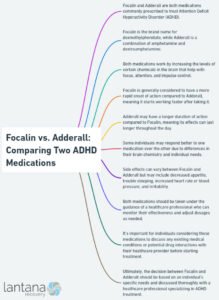Pictures of HIV Mouth Sores
Understanding HIV-Related Mouth Sores
Mouth sores are a common and often distressing symptom for individuals living with human immunodeficiency virus (HIV). These oral lesions can affect up to 50% of people with HIV and as many as 80% of those who have progressed to acquired immunodeficiency syndrome (AIDS), the most advanced stage of HIV infection. The weakened immune system caused by HIV makes the mouth more susceptible to infections, leading to various types of sores and ulcers. This article explores the types, appearance, symptoms, and causes of HIV-related mouth sores, supported by visual references where applicable.
Why Do Mouth Sores Occur in HIV?
HIV compromises the immune system, reducing its ability to fight off infections. This vulnerability allows bacteria, viruses, and fungi to thrive in the mouth, resulting in sores and lesions. These oral issues can appear at any stage of HIV infection, from early infection to advanced AIDS, and may serve as early warning signs or indicators of disease progression.
Types of HIV Mouth Sores
HIV-related mouth sores vary in appearance, location, and severity, depending on their underlying cause. Below are the most common types of oral lesions associated with HIV, along with their characteristics.
Oral Thrush (Candidiasis)
Oral thrush, caused by the Candida fungus, is the most prevalent oral lesion in people with HIV/AIDS. It appears as creamy white or yellowish patches on the mucous membranes of the mouth, including:
- Inner cheeks
- Tongue
- Roof of the mouth (palate)
- Throat
These patches may resemble cottage cheese and can be scraped off, revealing red, inflamed tissue underneath. Oral thrush can cause discomfort, a burning sensation, or altered taste.
Image Reference: Visuals reproduced with permission from ©DermNet NZ 2022.
Angular Cheilitis
Angular cheilitis manifests as painful cracks or fissures at the corners of the mouth. These sores may appear red, inflamed, or scaly and can occur independently or alongside oral thrush. The condition is often caused by fungal or bacterial infections exacerbated by a weakened immune system.
Image Reference: Visuals reproduced with permission from ©DermNet NZ and ©Dr. Richard Ashton 2023.
Herpes Simplex Virus (Cold Sores)
Herpes simplex virus (HSV) causes cold sores or fever blisters, which appear as small, fluid-filled blisters or ulcers. These sores typically form on the lips, gums, or roof of the mouth and are highly contagious. They may cause pain, tingling, or burning before the blisters erupt.
Image Reference: Visuals reproduced with permission from ©DermNet and ©Dr. Mashihul Hossain 2023.
Oral Hairy Leukoplakia
Oral hairy leukoplakia (OHL) is an early sign of HIV infection, often linked to the Epstein-Barr virus (EBV). It presents as painless, fuzzy white patches on the sides of the tongue. Unlike thrush, these patches cannot be scraped off and are generally asymptomatic, though they signal immune suppression.
Image Reference: Visuals reproduced with permission from ©DermNet 2023.
Kaposi Sarcoma
Kaposi sarcoma is a cancerous lesion associated with advanced HIV/AIDS. It appears as dark purple, red, or brown spots on the gums, tongue, or roof of the mouth. These lesions may be flat or raised and can indicate progression to AIDS.
Image Reference: Visuals reproduced with permission from ©DermNet 2023.
Canker Sores (Aphthous Ulcers)
Canker sores are small, painful ulcers with a gray or white center and a red border. They typically appear on the gums, inner lips, or roof of the mouth. While not exclusive to HIV, they are more common in immunocompromised individuals and can cause significant discomfort.
Image Reference: Courtesy of CDC/Sol Silverman, Jr., DDS (1999).
Oral Warts (HPV-Related)
Oral warts, caused by the human papillomavirus (HPV), appear as small, white, gray, or pinkish bumps with a cauliflower-like texture. These growths can develop on the lips, tongue, or inner cheeks and are more prevalent in people with HIV due to immune suppression.
Image Reference: Visuals reproduced with permission from ©DermNet 2023.
Symptoms and Impact of HIV Mouth Sores
HIV-related mouth sores can cause a range of symptoms that affect both physical health and quality of life. Common sensations include:
- Pain or burning, especially with ulcerative sores
- Altered taste or loss of taste
- Difficulty chewing, swallowing, or speaking
- Swelling or inflammation in the affected area
These symptoms can lead to serious complications, such as:
- Malnutrition: Painful sores may discourage eating, leading to inadequate nutrient intake.
- Speech Impairment: Sores on the tongue or lips can hinder clear speech.
- Increased Infection Risk: Open sores provide entry points for additional infections, further taxing the immune system.
When Do Mouth Sores Appear in HIV?
Mouth sores can occur at any stage of HIV infection, serving as both early indicators and signs of progression. For example:
- Early HIV Infection: Oral hairy leukoplakia and canker sores may appear as initial symptoms, signaling immune system decline.
- Advanced HIV/AIDS: Kaposi sarcoma and severe candidiasis are more common in later stages, reflecting significant immune suppression.
Regular dental checkups and early diagnosis are critical for managing these sores and preventing complications.
Differentiating HIV Mouth Sores from Other Conditions
While mouth sores are common in HIV, they can also result from other causes, such as trauma, autoimmune disorders, or systemic infections. Conditions that mimic HIV-related mouth sores include:
- Syphilitic Ulcers: Painless sores caused by syphilis.
- Histoplasmosis: Fungal ulcers from inhaling contaminated soil particles.
- Tuberculosis Ulcers: Rare oral lesions linked to TB infection.
- Cytomegalovirus (CMV) Ulcers: Painful sores caused by CMV in immunocompromised individuals.
A healthcare provider may perform diagnostic tests, such as biopsies or cultures, to rule out these conditions and confirm the cause of the sores.
Image Reference: Visuals reproduced with permission from ©DermNet NZ 2023.
Other Oral Symptoms of HIV
In addition to mouth sores, HIV can cause other oral health issues, including:
- Dry Mouth (Xerostomia): Reduced saliva production, increasing the risk of infections and tooth decay.
- Gum Disease (Gingivitis/Periodontitis): Swollen, bleeding gums or bone loss around the teeth.
- Tooth Decay: Increased susceptibility due to dry mouth and poor oral hygiene.
Image Reference: Courtesy of Biophoto Associates/Pri / Getty Images.
Managing and Preventing HIV Mouth Sores
Effective management of HIV-related mouth sores involves a combination of medical treatment and preventive care:
- Antiretroviral Therapy (ART): ART strengthens the immune system, reducing the frequency and severity of opportunistic infections like oral thrush and herpes.
- Antifungal or Antiviral Medications: Topical or oral medications can treat specific infections, such as candidiasis or herpes.
- Oral Hygiene: Regular brushing, flossing, and rinsing with antiseptic mouthwash can prevent secondary infections.
- Regular Dental Visits: Routine checkups allow for early detection and treatment of oral lesions.
Prompt diagnosis and treatment are essential to prevent the spread of infections and manage HIV effectively.
Conclusion
Mouth sores are a significant concern for individuals with HIV, impacting oral health, nutrition, and overall well-being. From oral thrush to Kaposi sarcoma, these lesions vary in appearance and severity, reflecting the state of the immune system. Early recognition, combined with proper medical and dental care, can mitigate their effects and improve quality of life. If you experience persistent or painful mouth sores, consult a healthcare provider for a thorough evaluation and tailored treatment plan.
💡 Frequently Asked Questions
Is It Mouth Sores or Everything Else?
Answer coming soon. We are working on detailed responses to this common question.
Watch Picture Biophoto Users/Pri / Getty Visuals
How Preferred Is HIV?
Answer coming soon. We are working on detailed responses to this common question.
⭐ Expert Tips
- Include seasonal or trendy variations to keep your meals exciting.
- Highlight prep shortcuts or time-saving techniques for busy cooks.
- Consider dietary restrictions and include substitution suggestions.
✅ Key Takeaways
- These dinner ideas are perfect for impressing guests or enjoying special occasions.
- Choose recipes that match your skill level and available kitchen tools.
- Presentation and taste both contribute to a memorable dining experience.
📣 Join Our Community
Want more inspiration like this? Subscribe to our newsletter for weekly dinner ideas and cooking tips!







